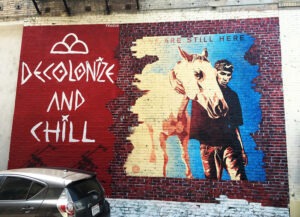
Mayor Teresa Tomlinson of Columbus, Georgia, was a natural choice for commencement speaker at Sweet Briar College. Tomlinson graduated from the college in 1987 and she is a large donor to the college. In fact, she recently made a million-dollar pledge, for which she received a lovely letter of thanks from the president. In the February 16th letter was a handwritten note, declaring “What a wonderful thing you have done!” and an acknowledgement that she would be the commencement speaker.

The letter is now an exhibit in the lawsuit filed against the college because, as Tomlinson revealed, she was never notified that the college was in financial distress. When she made her donation, and when it was accepted so graciously, it was shortly before the announcement in March that Sweet Briar would close in August. The school had already started the process of closure.
Saturday, in her commencement address, Tomlinson basically declared the closing unnecessary and the product of a lack of imagination and agility.
Her speech, which can be found in transcript form here, slammed the board, which voted for the closure, by calling them unequal to the leadership needed in that moment. To the students, she said:
Sign up for our free newsletters
Subscribe to NPQ's newsletters to have our top stories delivered directly to your inbox.
By signing up, you agree to our privacy policy and terms of use, and to receive messages from NPQ and our partners.
“The truth is: had you been at the table, had you been called to action, we would not be here today at the proposed end of an era which is in desperate need of continuance. The reason why is because you have the asset, the antidote, our Alma Mater was looking for. Your greatest asset right now, other than your superior Liberal Arts education, is your inexperience. You do not know how things ‘have always been done.’ You are unencumbered by the box of experience and expertise. You have the agility of mind and the ingenuity that diminishes in us with each passing year.”
Later in the speech, she got more specific about the nature of the board’s leadership deficit:
“Leaders understand that solutions come from the most unlikely place. The solution may come from your perceived ‘enemy’; it may come from those perceived to be uninformed; it nearly always comes out of nowhere. And, that is why inclusiveness is so important. The larger you make the conversation, the more impressive the results. Now, there are people out there thinking: ‘No way. I am not about to tee-up some broad conversation with a bunch of people I do not know to discuss possible solutions when I know the short list of what is viable.’ I understand that sentiment, but you are going to fail as a leader if you follow it. If your ideas are so good, if your short list so miraculous, then test it against the critical eye of stakeholders.
“If you cannot do that, I suggest that you know your motives are not pure. You are not looking for the best solution: you are looking for the solution most comfortable for you. And, that, friends, is not leadership.”
Tomlinson is right on the money in calling out the board of the college for neglecting to involve other stakeholders. As we will say again and again, the board is not any organization’s whole governance system. Governance has always included regulatory agencies, attorneys general (if they choose to assert themselves), the courts, and funders. And then there are the other stakeholders, whose energy, money, and ideas often help to build and guide and sustain the organization. That last group has become more and more activist vis-à-vis nonprofits in this digital age, and in fact with other institutions as well. Engaging them, making good and respectful use of their attachments to our organizations, is a core part of what modern boards need to ensure. Tomlinson clearly understands this.
The days of board insularity are waning fast. As Tomlinson says, it is time to understand that “if your ideas are so good, if your short list is so miraculous, then test it against the critical eye of stakeholders”—or even better, include them in the process of generating those ideas.













